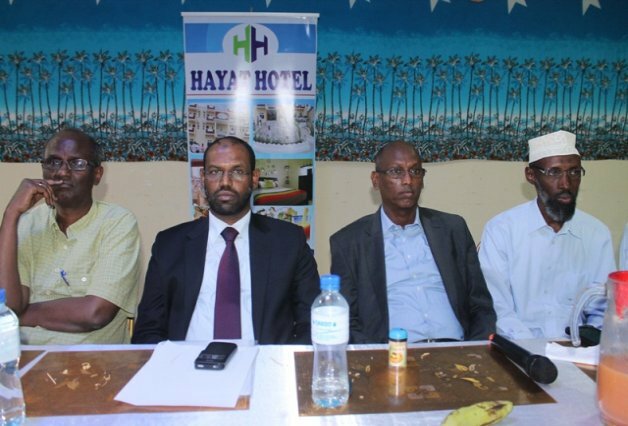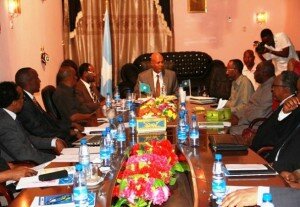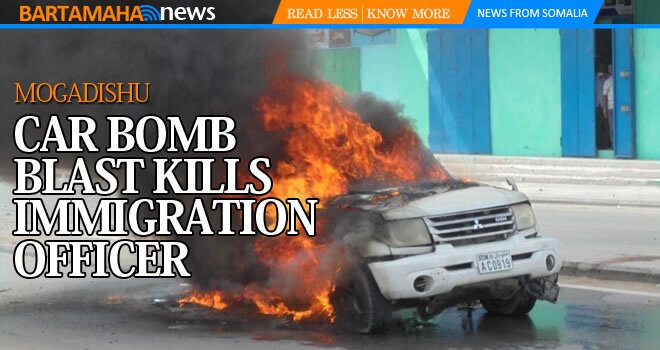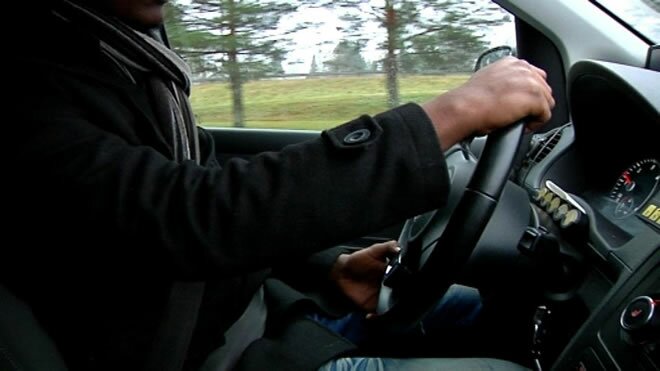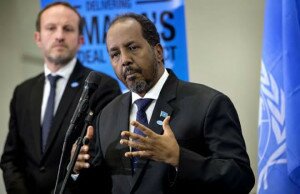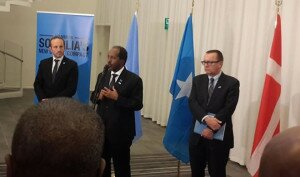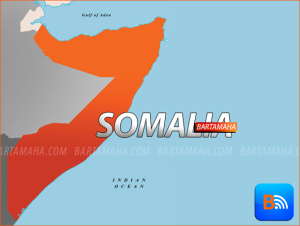Driving home the mine risk message in Somalia

A deminer in Somalia. The Development Initiative has successfully trained people to get rid of land mines in Mali, Sudan, South Sudan, Afghanistan, Iraq and Kuwait. But in Somalia, people’s limited education made the task challenging. Photo by: TDI
By Richard Jones (DEVEX) “If you don’t touch them, they can’t hurt you — it’s as simple as that.”
That’s the advice from Stephen Saffin, head of operations at The Development Initiative, which provides land mine and unexploded ordnance clearance worldwide and recently concluded a 16-month demining and mine risk education project in Somalia.
Accessing some of the most dangerous territory in the world, explosive ordnance disposal teams, manual mine clearance teams and mine risk education teams were tasked with stabilizing newly recovered areas and consolidating the capacities of national authorities to manage the explosive threat more effectively.
“We delivered mine risk education to more 170,000 people and if we save just one life as a result of that then it’s worth it,” Saffin asserted about the project, led by the United Nations Office for Project Services in conjunction with the U.N. Mission in Somalia and supported by funding from the Japanese government and the European Union.
Social benefits
When the project started, Saffin recalled, many locals initially signed up to work because the salary was good. After a few weeks, however, their initial enthusiasm waned, with many preferring to skip work to chew khat leaves, a mild stimulant widely consumed in the Horn of Africa.
Project leaders had to take steps to motivate staff and told the local workers that they wouldn’t get paid if they didn’t turn up for work.
Everything soon changed, Saffin explained: “It was amazing to see the change in the attitude, and to me that was the greatest benefit — to walk away safe in the knowledge that these people were prepared to work hard, earn a bit of money for their families and have new opportunities open up for them through the program.”
Mine risk education is of course no small matter in a conflict-ridden country such as Somalia, where unexploded ordnance can lie dormant for years. “It can often be completely and totally inert until some poor child comes along and sees a shiny, metallic object and the first thing he does is kick it,” Saffin explained. “Because that’s what little boys do. And bang, that’s it.”
He recalled one particularly tragic case of an 11-year-old girl from a village that TDI teams had not yet reached. She picked up a grenade, which exploded, blinding her in both eyes and blowing both of her arms off.
“Some might say that being born as a female in Somalia, you’re already at a disadvantage in their society the way that it’s structured. It’s already hard enough, but this type of incident is a tragedy of monumental proportions,” Saffin noted. “So the fact that our teams are able to go and reach 170,000 people in 16 months and give them a basic understanding that if they see something they don’t know or understand, for heaven’s sake don’t touch it and just call the authorities.”
The locals, he pointed out, quickly recognized the benefits of their work — and not just de-mining itself.
“I think we’ve got to look at the bigger picture: In many respects mine action can sometimes be seen purely as ‘Look, there’s a landmine, it’s bad, it needs to be removed.’ And once it’s removed, that’s it — job done. But I think the greater benefit to the task we carried out in Somalia was more to do with the fact that we were providing training, we were providing employment, we were providing a monthly salary,” Saffin said.
It’s not just about picking up explosive ordnance, he explained — the people need to learn that if they work hard and get a little bit of training, they can earn a little bit of money without having to shoot each other.
“It opens up an opportunity and a bit of a different lifestyle, which people there might not have been exposed to in the past, where there’s often literally nothing,” Saffin commented. “The clan system in Somalia is deeply entrenched and perhaps the program was also about showing people that there’s more to life.”
The key message now, he stressed, is to tell beneficiaries: “Come on board, come and work with us, we’ll give you a skill and if you work hard you’ll receive just reward for that skill.”
‘A different ballgame’
Despite TDI having successfully trained people all over the world and in such testing environments as Mali, Sudan, South Sudan, Afghanistan, Iraq and Kuwait, Somalia was different and one of the main challenges the training teams encountered was how to deal with a lack of local capacity.
“One eye-opener for our training team — and something that we need to incorporate going forward — was the capacity of the Somali students that we received. It completely and totally took our training team by surprise,” Saffin explained.
“Generally speaking, mine clearance is not rocket science — it’s just a case of following the procedures correctly and safely, making sure you don’t do things too quickly.”
However, Somalia was “a whole new ballgame,” because teams were dealing with a group of people who had only been exposed very limited formal education. Saffin said that while many Somali youngsters could expertly whip out and operate any number of apps on an iPhone, most had learned only rudimentary mathematics — addition and subtraction — in school, alongside compulsory Koranic study.
“That’s the sumtotal of their education,” he explained, giving the example of how they initially struggled to teach students how to prepare a 25 cm-long detonating cord because most of them had never used a ruler to do measurements.
A back-to-basics approach to explaining the task was often needed, Saffin said. And then, even with extremely basic levels of education, they picked it up “in minutes.” So it’s not, Saffin said, a question of their intelligence, “just a case of what they’ve been exposed to,” which prompted the teams to tailor their lesson plans to the level of the students.
“The last thing we want to do is to put someone in a mine field when he thinks he understands, but actually doesn’t,” he noted.
Local intel
Another of the main lessons that Saffin said teams took away from the project was to always develop good contacts within the local community, in order to gather intelligence about where the ordnance is, to avoid wasting time — and money — on fruitless searches.
“We arrive on the ground and the first thing we have to do is carry out a survey to find out where the main threat comes from — mine action is not cheap and the last thing we want to do is to go and search three million square meters of ground where there is no threat,” he explained.
Sharing information with other international groups operating in the area is always a good idea and helps to keep everyone safe.
“If the World Food Program, for example, is going into an area to provide food … if there’s anything they can do to assist us, it would be a case of using their local contacts, talking to the local people and asking them about areas that we need to avoid. This keeps the WFP people safe, by preventing them from venturing into dangerous zones, but also acts as a first-stage survey for us to work out exactly where the threats lie and narrow down the search area,” Saffin said.
Asked about his key message to members of the development community operating in conflict-affected countries such as Somalia, Safin was clear: “Take care of yourselves, speak to the locals and don’t go into the bush without having done so. Take heed of their warnings and ensure that you feed information back up the chain.”
Mine action, he concluded, “is not a precise science, so we need to continue to receive information through surveys, in order to better understand the risks we face and effect change on the ground.”
DEVEX
Comments
comments
 Calendar
Calendar





















